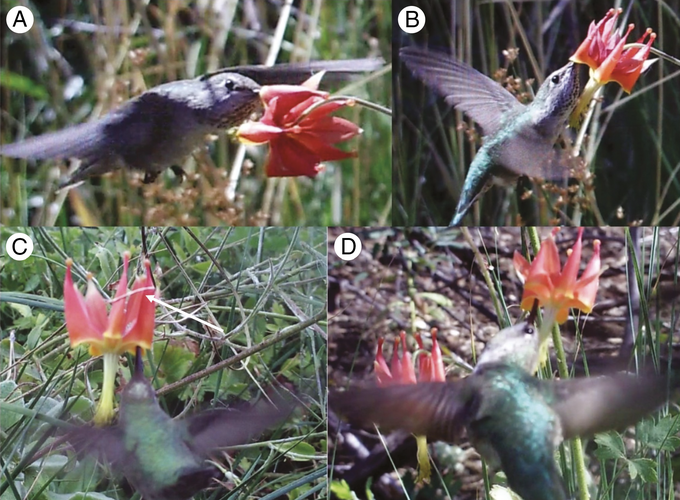 Image credit: LoPresti et al. (2020)
Image credit: LoPresti et al. (2020)
 Image credit: LoPresti et al. (2020)
Image credit: LoPresti et al. (2020)
Background and Aims - Pendulous flowers (due to a flexible pedicel) are a common, convergent trait of hummingbird-pollinated flowers. However, the role of flexible pedicels remains uncertain despite several functional hypotheses. Here we present and test the ‘lever action hypothesis’: flexible pedicels allow pendulous flowers to move upwards from all sides, pushing the stigma and anthers against the underside of the feeding hummingbird regardless of which nectary is being visited. Methods - To test whether this lever action increased pollination success, we wired emasculated flowers of serpentine columbine, Aquilegia eximia, to prevent levering and compared pollination success of immobilized flowers with emasculated unwired and wire controls. Key Results - Seed set was significantly lower in wire-immobilized flowers than unwired control and wire control flowers. Video analysis of visits to wire-immobilized and unwired flowers demonstrated that birds contacted the stigmas and anthers of immobilized flowers less often than those of flowers with flexible pedicels. Conclusions - We conclude that flexible pedicels permit the levering of reproductive structures onto a hovering bird. Hummingbirds, as uniquely large, hovering pollinators, differ from flies or bees which are too small to cause levering of flowers while hovering. Thus, flexible pedicels may be an adaptation to hummingbird pollination, in particular due to hummingbird size. We further speculate that this mechanism is effective only in radially symmetric flowers; in contrast, zygomorphic hummingbird-pollinated flowers are usually more or less horizontally oriented rather than having pendulous flowers and flexible pedicels.